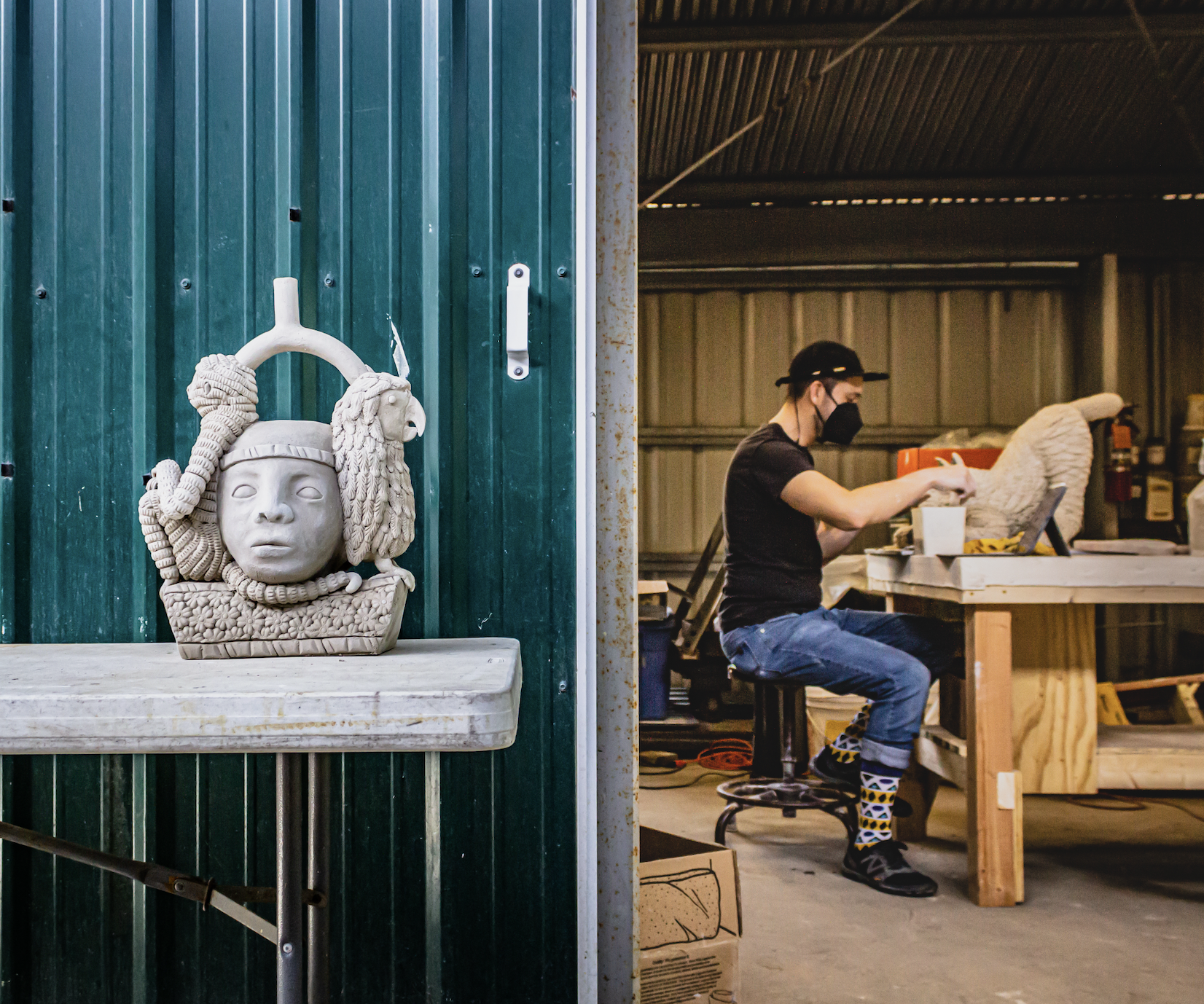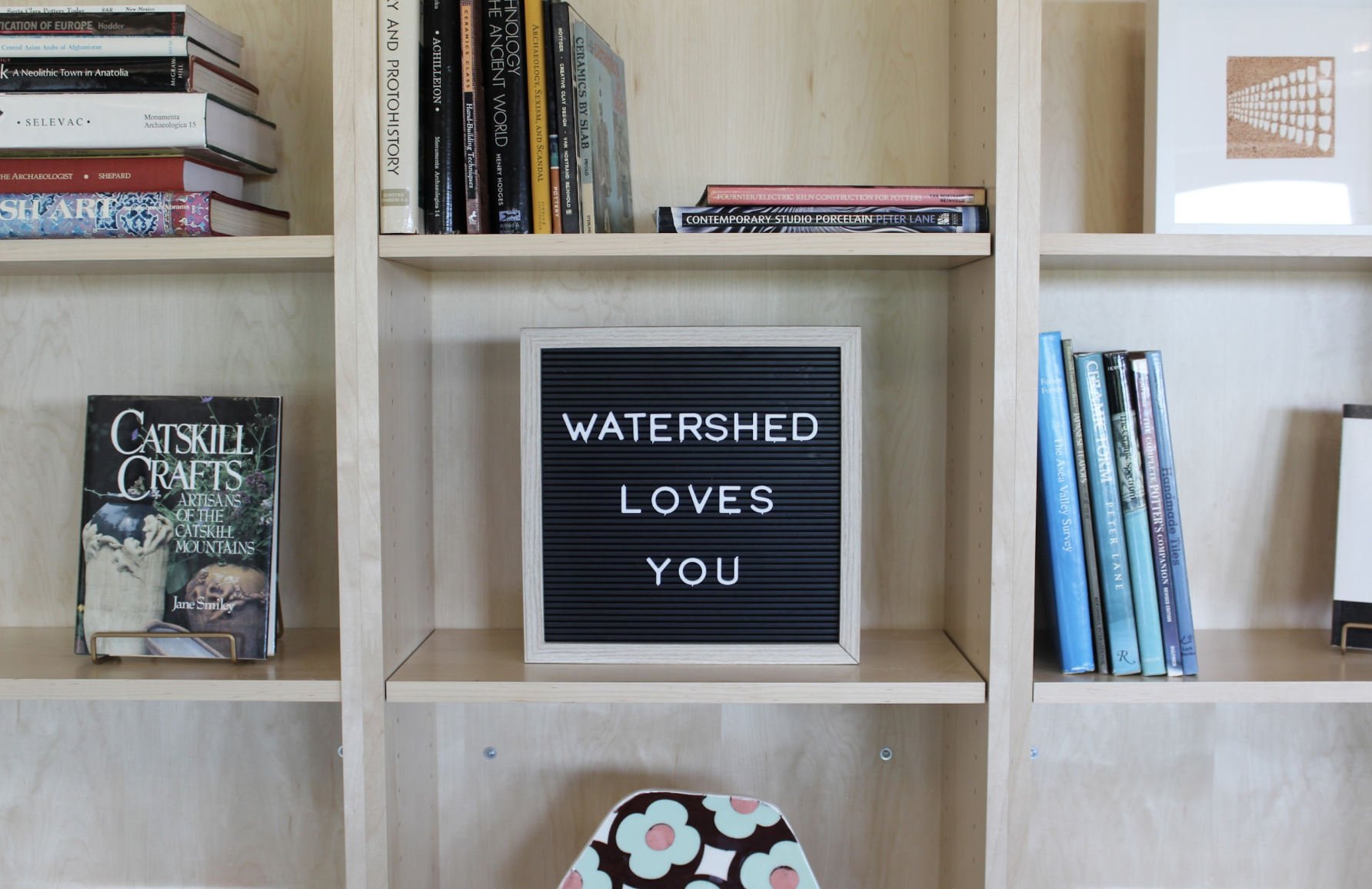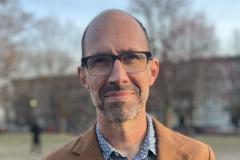Watershed: The Radical Act of Making
 A Place Teaching Us to Slow Down
A Place Teaching Us to Slow Down
There are places that teach us to slow down – not through instruction or agenda, but through the cadence of their day, the way they retreat from the usual set of demands. The Watershed Center for the Ceramic Arts is one such place. Set on fifty-four acres of rolling fields and pine forest in Midcoast Maine, it is a site where clay, time, and community converge into a rare form, a kind of sanctuary, a retreat, a pause.
Watershed’s origins lie in the conviction that art, especially art made from the earth, can be both a personal and a civic act, a space for transformation and collective repair.
For nearly four decades, Watershed has offered artists a space to make, to question, to rest, and to build. It was born not from the notion of creating a perfect institution, but from a desire to hold space for the radical act of making. In a cultural moment defined by speed, division, and exhaustion, this mission feels all the more urgent.
Today, as we consider the theme Studio as Sanctuary, in this incredibly difficult period of uncertainty and anxiety, Watershed stands as both a model and a question:
How can an arts organization remain rooted in its history while staying porous, responsive, and alive to the urgencies and issues of the present? How can we balance the quiet of clay with the movement of change?
Clay as Memory, Clay as Mirror
Clay holds everything. It records the touch of the hand and the heat of the kiln; it carries memory across centuries and continents. Clay is archaic and cutting-edge; it is tradition and the avant-garde. At Watershed, clay is not simply a medium; it is a teacher, an interlocutor, a witness.
The organization’s foundational belief, that clay is uniquely transformative, has shaped decades of programming, conversation, and practice. Clay links us to the past, but also points forward, reminding us that human innovation has always been entangled with the earth.

When artists arrive at Watershed, they encounter more than material. They meet a landscape layered with history: farm land, the site of a failed brick factory, an accumulation of the remnants of artists before, but also a clean slate determined by each body. Art exists throughout the landscape, installed up in a tree, left behind as a kind of response, and, still, even longer before that, this land is the homeland of the Wabanaki people. We recognize that we are on indigenous land. The place we now call Maine is home to the sovereign people of the Wabanaki Confederacy: the Abenaki, the Penobscot, Passamaquoddy, Maliseet, and Mi’kmaq peoples. We exist on their unceded homelands, and Watershed, like other institutions, must recognize its responsibility to this history and this place. We have work to do.
Each residency begins in conversation with this layered terrain, a layered narrative, its histories of extraction and regeneration, labor and learning. Watershed is, in the end, a set of lived experiences, shared and retold. It is a site of connection and also potential.
At Watershed, clay is both a tool and a kind of mirror. It asks artists to reflect on their own place in a larger continuum of making and meaning. Through repetition, failure, and persistence, it reveals both the fragility and resilience of the human spirit. To shape clay is to shape time, to participate in a slow process that resists the efficiencies of the market and the noise of contemporary life. It is, in itself, an act of healing.
 A Radical Practice of Care
A Radical Practice of Care
Watershed was founded in the 1980s – a period marked by both cultural possibility and profound loss. During the AIDS crisis, when fear and stigma were silencing creative communities, Watershed became a refuge. People living with HIV/AIDS came to Maine seeking respite, connection, and a kind of quiet solidarity. It was here, amid fields and kilns, that they built a community rooted in care and presence.
In this space, through the incredible vision and work of founding trustee Lynn Duryea, the Watershed Workshop for People with HIV/AIDS was born. A groundbreaking initiative that offered not only space for making but for belonging, at the time of the workshop’s inception in 1991, networks of social support were critical to the mental and emotional well-being of those living with what was then an incurable disease.
The program’s design drew on what Watershed already did best: create a setting of relative isolation, shared meals, open studios, and collective focus on the act of making. The familiar rhythms of residency life, so essential to building an artist community, were extended to a group that society had largely turned away from.
 The results were profound. The workshops’ structure – studio time, dormitory-style living, communal meals – replicated the essential conditions that had long made Watershed successful in cultivating connection and creative flow. But within the context of the HIV/AIDS crisis, these same elements took on deeper meaning: they offered sanctuary, trust, and dignity.
The results were profound. The workshops’ structure – studio time, dormitory-style living, communal meals – replicated the essential conditions that had long made Watershed successful in cultivating connection and creative flow. But within the context of the HIV/AIDS crisis, these same elements took on deeper meaning: they offered sanctuary, trust, and dignity.
“The Watershed Workshop for People with HIV/AIDS was truly a groundbreaking project, one that has never received proper visibility or recognition outside of the communities it directly served. I can think of few other organizations in the field of craft that responded to the AIDS crisis with the intentionality, care, and compassion that Watershed did in establishing this visionary program.” – Paul Sacaridiz
The workshops embodied the therapeutic potential of craft. They aligned with a long lineage of creative practice as healing – from the postwar ceramics programs that rehabilitated veterans, to community-based studios that have long offered space for expression and repair. But unlike the public empathy extended to veterans, people living with HIV/AIDS faced a double stigma – socially marginalized and physically vulnerable.
 By simply existing, Watershed’s workshops stood as a counter-narrative to the climate of fear, prejudice, and misinformation surrounding the disease. As artist and Watershed co-founder Lynn Duryea noted,
By simply existing, Watershed’s workshops stood as a counter-narrative to the climate of fear, prejudice, and misinformation surrounding the disease. As artist and Watershed co-founder Lynn Duryea noted,
“In so many places in the lives of people with AIDS, they are treated like sick people. Here they are treated like well people, like creative people.”
Participants were invited to make art freely – no requirements, no prescriptive outcomes. Materials and guidance were available, but each person was encouraged to engage at their own pace, in their own way. The creative act became a means of reclaiming agency, of making visible what had been unseen.
Photographs taken during each workshop capture not just the clay objects, but the unmistakable warmth of shared time and fellowship. These images stand as quiet testaments to what was built there: a community founded on empathy, trust, and mutual care.
In retrospect, the Watershed Workshops for People with HIV/AIDS can be seen as early examples of what we now understand as socially engaged art. As artist and theorist Pablo Helguera has written, one of the defining factors of socially engaged practice is its “expansion to include participants from outside the regular circles of art and the art world.” Watershed’s invitation to those living with HIV/AIDS to take part in a full residency program did precisely that.
Former director Holly Walker described the organization’s motivation simply:
“It was the opportunity to do something that is a little more socially outreaching… getting a number of people together who may or may not know each other but who share something very strong in common: to allow them to feel they aren’t alone.”
These workshops were not symbolic gestures. They were lived acts of solidarity – spaces of healing, creativity, and repair built on the foundational principles that still guide Watershed today: care, trust, and shared humanity. This programming defined a potential for Watershed at a formative moment, and it continues to be a touchstone that we must imagine and maintain.
Listening as Practice
If clay is transformative, then listening is the process that allows that transformation to take root. Watershed’s identity has always been built on listening to artists, to the field, to the shifting conditions of the world.
Listening, however, is not passive. It demands humility, adaptability, and courage. It asks an organization to question its own assumptions, to make room for discomfort, and to welcome change.
 Over the past decade, Watershed has taken meaningful steps toward inclusion and equity through the incredible leadership of former director Fran Rudoff and other staff. Watershed has taken steps, but the work must and will continue. Identifying, unearthing systems that continue to close the organization to some must be an active pursuit. Watershed is lucky to have tremendous partners in this work, from the artists who trust us to make a space for their dreamed-of communities, to the donors who have enabled us to expand sponsorships specifically focused on artists of color and those underrepresented in the field. There is much to do. Watershed is lucky to be partnering with The Color Network to support artists of color, expanding programs for Maine K–12 educators, and centering artist-driven programming that reflects a diversity of voices and visions.
Over the past decade, Watershed has taken meaningful steps toward inclusion and equity through the incredible leadership of former director Fran Rudoff and other staff. Watershed has taken steps, but the work must and will continue. Identifying, unearthing systems that continue to close the organization to some must be an active pursuit. Watershed is lucky to have tremendous partners in this work, from the artists who trust us to make a space for their dreamed-of communities, to the donors who have enabled us to expand sponsorships specifically focused on artists of color and those underrepresented in the field. There is much to do. Watershed is lucky to be partnering with The Color Network to support artists of color, expanding programs for Maine K–12 educators, and centering artist-driven programming that reflects a diversity of voices and visions.
Still, listening requires constancy. It means acknowledging that inclusion is not an endpoint, but an ongoing process of reflection and response. Watershed’s values, its commitment to openness, to deconstructing systems of exclusion, to learning from feedback, point toward this evolving horizon.
Sanctuary as Resistance
In a time when many cultural spaces are shrinking under economic pressure or ideological division, the idea of sanctuary can sound nostalgic. But at Watershed, sanctuary is not withdrawal; it is resistance. It is the creation of conditions where care, curiosity, and collaboration can thrive against the grain of grind culture and fragmentation.
This resistance is quiet but profound. It happens in the rhythm of a shared meal, in the long conversations after dark, in the collective firing of a kiln. It occurs in the deliberate act of making something by hand, of refusing the quick answer or the easy form.
Watershed’s model of sanctuary is thus not about retreat but engagement. It insists that slowing down, listening, and tending to each other are political acts. In this sense, Watershed continues the radical lineage that began during its earliest days, a lineage of artists building a world within the cracks of the old one.

Legacy as Invitation
“From its inception, the key motivation for Watershed was to ask a simple question, one that to this day speaks to the power of making and the creative inquiry that comes out of community. That question is ‘What can happen when you bring a group of people together and give them clay, time, and space to make things from clay?’ It is an open-ended question, and over our thirty-eight-year history, it has been answered differently by every group that has come. It is a call and response that is timeless, ever changing, and radical in its simplicity, for its power comes from the collective embrace of uncertainty.” – Chris Gustin
Legacy is not a monument; it is a conversation. Watershed’s history, from its founding in the 1980s to its partnerships and programs today, forms a living archive of collective inquiry. It has shaped the trajectory of the ceramic field not by dictating its course, but by offering a space where artists define the trajectory, build and shape the content, define the direction and import of the field. It is a place that seeks to make space for new directions to emerge.
The challenge now is to ensure that Watershed’s legacy remains porous, that it continues to invite participation. Watershed’s commitment to inclusivity, sustainability, and openness must translate into practices that are tangible and ongoing: honest assessment and change to address continued issues around access, from the financial to the embedded forms of exclusion, equitable compensation for artists, environmentally conscious infrastructure, accessible programming for educators, and a continued commitment to the power of art in healing.
Each of these choices reflects a deeper philosophical stance: that the value of art lies not only in what is made, but in how it is made, and who gets to make it.
Watershed’s next era, then, is not about building a larger institution, but about deepening its capacity to listen, to hold complexity, to act with integrity. Its leadership will depend on its ability to stay grounded in clay’s lessons: to remain flexible, to welcome pressure, to support change.
The Work of Becoming
Watershed’s story is one of continual becoming. It began as a radical experiment and remains, at its core, an unfinished project, a living studio shaped by the questions and convictions of those who pass through it.
 In this, I hope it continues to model new ways of being a cultural institution: rooted yet responsive, principled yet open. It reminds us that sustainability is not merely about resources, but about relationships, about the careful tending of people, time, and trust.
In this, I hope it continues to model new ways of being a cultural institution: rooted yet responsive, principled yet open. It reminds us that sustainability is not merely about resources, but about relationships, about the careful tending of people, time, and trust.
Watershed’s philosophy, the slow, transformative power of making in clay cultivates connection, courage, and creative inquiry, is both a declaration and a promise. It is an acknowledgment that art, like water, seeks its own level; that creativity flows where care is given; that sanctuary is not a place, but a practice.
In an age that demands both action and rest, both resistance and repair, Watershed offers a model of what it means to hold space for all of it: to teach and to listen, to shape and be shaped, to stand at the confluence of past, present, and possibility.
Here, in the quiet of the Maine woods, artists continue to find what they didn’t know they were looking for, a reminder that even in times of uncertainty, transformation remains possible.
Watershed endures not because it resists change, but because it embraces it. It is, and has always been, a place in motion: a sanctuary of process, a community of practice, a watershed in every sense, a place where streams of thought and experience meet, merge, and flow toward something new.
 Author Note
Author Note
By David S. East, with notes and reflection from Chris Gustin and Lynn Duryea.
David S. East is the Executive Director of the Watershed Center for the Ceramic Arts. An artist, educator, curator, and writer, East’s work explores the intersections of material, process, and cultural inquiry. He lives and works in Maine.
Chris Gustin is an acclaimed ceramic artist and educator whose sculptural and functional works explore the sensual and architectural qualities of form. He lives and works in Dartmouth, Massachusetts.
Lynn Duryea is a Professor Emerita of Art at Appalachian State University in Boone NC, who works in Maine, in South Portland, and on Deer Isle. Lynn is a Founding Trustee of Watershed Center for the Ceramic Arts and was the Program Coordinator and Artist-in-Residence for The Watershed Workshop for People with HIV/AIDS.


